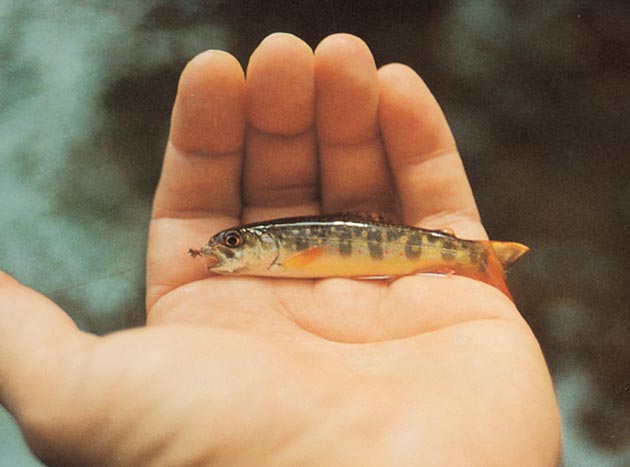
This Article From Issue
July-August 1998
Volume 86, Number 4
DOI: 10.1511/1998.31.0
Brook Trout. Nick Karas. 384 pp. Lyons and Burford, 1997. $35.
Few books attempt to represent the biological sciences, historical nonfiction and modern sporting literature under one cover. And those that try usually aren't well-written. Brook Trout succeeds at all three and more. Nick Karas, an ichthyologist and outdoors writer, is renowned for his fishing columns and for his other book, The Striped Bass. One might suppose by its title that Brook Trout is a biological description of a particular species of North American char. It is that, but Karas offers more. Having emotionally attached himself to his subject, he illuminates it beyond its position in the cold water environment. Brook Trout transforms Salvelinas fontinalis into a symbol for all things intact in its natural world. More important, he makes the reader aware of what has caused the brook trout to retreat from an extensive cold-water niche to small pockets of refuges.

From Brook Trout.
An opening narrative history recalls such icons as Daniel Webster and attractively weaves them into a fabric of fish lore and mythology. There are tales of large specimens captured with primitive equipment after arduous battles under adverse circumstances. By the early 1800s, brook trout were extinct in much of the East and Southeast through a combination of logging and overfishing along rivers that supplied raw materials for countless acid factories that supported a growing tanning industry. Rivers were used as open sewers for factory wastes, not for recreation. The consequences of industrialization on the brook trout were agonizingly predictable, especially when taking into account the plights of other species (among them, the mountain lion and wolf) similarly crushed under the heavy foot of economic growth and human expansion. If the book has a fault, it is that too much space is devoted to non-science aspects, but no reader will care once into the material. Karas summarizes the brook trout's evolution and geographic distribution, and he sketches key biological characteristics. He does not quote from an extensive literature, nor does he present in-depth information on genetic variation among geographically distinct populations of S. fontinalis. Also lacking is a large body of information on the population ecology of S. fontinalis, a subject that one might expect to find well covered. Nonetheless, the reader gets the message that S. fontinalis is definable by an array of characteristics setting it apart from all other fishes. The brook trout's vulnerability, although distinctive, unites it with all other species that belong to essential, particularly narrow niches.
Karas also takes the reader on a tour of the places where S. fontinalis is still pursued for sport. Eastern Canada, Maine, New Hampshire, New York, Pennsylvania, North Carolina, Georgia and even New Jersey harbor remnant populations. Natural resources and ecosystems-management practices are crucial topics in any consideration of a species so susceptible to environmental change, but they are only touched on in this book.
The intrinsic value of a species to an ecosystem may or may not ensure the trout's survival over the next hundred years, as changing environments select for new assemblages within them. On the other hand, the degree to which a species appeals to human aesthetic sensibilities—E. O. Wilson's concept of biophilia—may lead to the salvation of the brook trout. If this happens, we can thank people like Nick Karas and Nick Lyons, his publisher, for helping to make it so.—Dickson Despommier, Environmental Health Sciences and Microbiology, Columbia University
American Scientist Comments and Discussion
To discuss our articles or comment on them, please share them and tag American Scientist on social media platforms. Here are links to our profiles on Twitter, Facebook, and LinkedIn.
If we re-share your post, we will moderate comments/discussion following our comments policy.